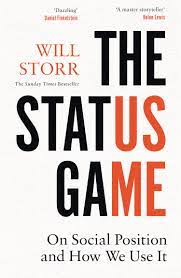The Status Game
Will Storr, 2021, The Status Game: On Social Position and How We Use It
1 Book Image
2 More info
The Status Game: On Social Position and How We Use It - Review
For centuries, philosophers and scholars have described human behaviour in terms of sex, power and money. In The Status Game, bestselling author Will Storr radically turns this thinking on its head by arguing that it is our irrepressible craving for status that ultimately defines who we are.
From the era of the hunter-gatherer to today, when we exist as workers in the globalised economy and citizens of online worlds, the need for status has always been wired into us. A wealth of research shows that how much of it we possess dramatically affects not only our happiness and wellbeing but also our physical health – and without sufficient status, we become more ill, and live shorter lives. It’s an unconscious obsession that drives the best and worst of us: our innovation, arts and civilisation as well as our murders, wars and genocides. But why is status such an all-consuming prize? What happens if it’s taken away from us? And how can our unquenchable thirst for it explain cults, moral panics, conspiracy theories, the rise of social media and the ‘culture wars’ of today?
On a breathtaking journey through time and culture, The Status Game offers a sweeping rethink of human psychology that will change how you see others – and how you see yourself
